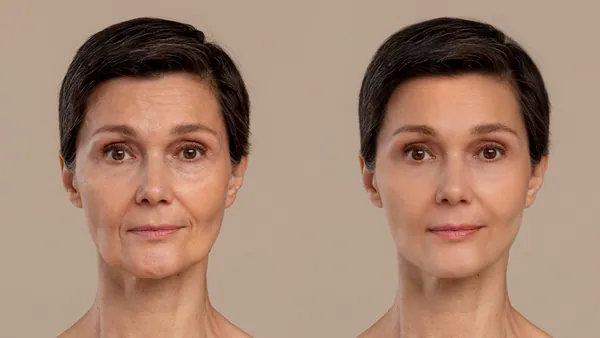
Facelift Innovation Extends to Benefit Balding Men
The quest for eternal youth has long been a driving force behind advancements in cosmetic surgery. Among the myriad procedures designed to turn back the hands of time, the facelift stands as a cornerstone of facial rejuvenation.
The quest for eternal youth has long been a driving force behind advancements in cosmetic surgery. Among the myriad procedures designed to turn back the hands of time, the facelift stands as a cornerstone of facial rejuvenation. However, traditional facelift techniques have often posed challenges for individuals with baldness or thinning hair, limiting their accessibility and efficacy. In a groundbreaking development, a new facelift technique has emerged, offering hope and opportunity for bald men seeking to reclaim their youthfulness. In this comprehensive exploration, we delve into the intricacies of this innovative approach, its benefits, and its transformative potential for those navigating the intersection of baldness and facial aging.
Understanding the Challenge:
Baldness, whether due to genetic predisposition, aging, or other factors, presents unique considerations in the context of facelift surgery. Traditional facelift techniques often rely on incisions made along the hairline or within the scalp, which can be problematic for individuals with limited hair coverage. These incisions may disrupt existing hair follicles, leading to visible scarring or hair loss, thereby undermining the desired aesthetic outcome. Consequently, bald men have historically faced barriers to undergoing facelift procedures, as conventional approaches may exacerbate their hair loss concerns or yield suboptimal results.
The Emergence of a New Solution:
Recognizing the need for a more inclusive and effective approach to facelift surgery, pioneering surgeons have developed a novel technique tailored specifically to the needs of bald men. This innovative method, often referred to as the "bald-friendly facelift," employs strategic incision placement and advanced surgical maneuvers to minimize the risk of visible scarring and hairline distortion. By leveraging alternative access points and optimizing tissue manipulation, this technique offers a viable solution for bald individuals seeking facial rejuvenation without compromising their hair aesthetics.
Key Components of the Bald-Friendly Facelift:
Central to the success of the bald-friendly facelift are several key components that distinguish it from traditional approaches. First and foremost is the meticulous planning of incision placement to minimize disruption to existing hair follicles and preserve natural hairlines. Surgeons adept in this technique employ precise incision patterns that strategically conceal scars within natural creases or behind the ears, ensuring optimal camouflage and minimal detectability post-surgery. Additionally, specialized suture techniques and tissue handling maneuvers are employed to mitigate tension on the scalp and minimize trauma to surrounding tissues, further reducing the risk of postoperative complications such as hair loss or visible scarring.
Advantages and Benefits:
The adoption of the bald-friendly facelift technique heralds a new era of accessibility and efficacy in facial rejuvenation for bald men. By circumventing the limitations imposed by traditional facelift approaches, this innovative technique offers numerous advantages and benefits:
Enhanced Aesthetic Outcomes: The strategic placement of incisions and refined tissue manipulation techniques contribute to more natural-looking results, with minimal visible scarring or hairline distortion.
Greater Confidence and Self-Esteem: For many bald individuals, concerns about visible scarring or hairline alteration have deterred them from pursuing facelift surgery. The bald-friendly facelift eliminates these barriers, empowering individuals to undergo the procedure with confidence and reclaim their youthful appearance without compromising their hair aesthetics.
Longevity and Durability: By minimizing trauma to the scalp and surrounding tissues, the bald-friendly facelift enhances the longevity and durability of results, ensuring that the rejuvenated appearance withstands the test of time.
Customization and Personalization: Surgeons proficient in this technique can tailor the procedure to suit the unique anatomical characteristics and aesthetic goals of each individual, delivering personalized results that align with their desired outcome.
Minimal Downtime and Recovery: The innovative approach employed in the bald-friendly facelift facilitates faster healing and recovery, allowing individuals to resume their daily activities sooner and enjoy the transformative effects of the procedure without prolonged downtime.
Patient Selection and Considerations:
While the bald-friendly facelift represents a significant advancement in facial rejuvenation, careful patient selection and consideration remain paramount. Surgeons must assess each individual's candidacy for the procedure based on factors such as their hair loss pattern, skin laxity, overall health status, and aesthetic goals. Additionally, open communication between the surgeon and the patient is essential to ensure realistic expectations and a thorough understanding of the surgical process and potential outcomes.
Potential Risks and Complications:
While the bald-friendly facelift offers numerous benefits, it's essential to acknowledge the potential risks and complications associated with any surgical procedure. These may include infection, bleeding, asymmetry, nerve injury, and adverse reactions to anesthesia. However, with proper patient selection, meticulous surgical technique, and adherence to postoperative care instructions, the likelihood of experiencing these complications can be minimized.
Future Directions and Innovations:
As with any field of medicine, ongoing research and technological advancements continue to shape the landscape of cosmetic surgery. From advancements in minimally invasive techniques to the integration of regenerative medicine and stem cell therapy, the future holds promise for further enhancing the efficacy, safety, and accessibility of facial rejuvenation procedures for all individuals, regardless of hair status.
Comparison with Traditional Facelift Techniques:
In the realm of cosmetic surgery, the evolution of facelift techniques has been driven by a pursuit of natural-looking results, minimal scarring, and reduced downtime. Traditionally, facelift procedures have posed challenges for individuals with baldness or thinning hair, as incisions along the hairline can lead to visible scarring and hairline distortion. However, the emergence of the bald-friendly facelift technique has revolutionized facial rejuvenation for this demographic, offering a tailored approach that addresses their unique needs while delivering optimal outcomes. Let’s explore the key distinctions between traditional facelift techniques and the bald-friendly facelift, shedding light on their respective advantages and considerations.
Incision Placement:
One of the primary differentiators between traditional facelift techniques and the bald-friendly facelift lies in the placement of incisions. Traditional facelifts typically involve incisions made along the hairline or within the scalp, which can pose challenges for individuals with limited hair coverage. In contrast, the bald-friendly facelift employs strategic incision patterns that minimize disruption to existing hair follicles and preserve natural hairlines. By concealing incisions within natural creases or behind the ears, this innovative approach reduces the risk of visible scarring and hairline distortion, resulting in more discreet and aesthetically pleasing outcomes.
Surgical Maneuvers and Tissue Handling:
Another crucial aspect to consider is the surgical maneuvers and tissue handling techniques employed during facelift surgery. Traditional facelift techniques often involve extensive dissection of tissues and manipulation of the scalp, which can increase the risk of trauma to surrounding structures and exacerbate hair loss concerns. In contrast, the bald-friendly facelift utilizes refined surgical techniques and specialized tissue handling maneuvers to minimize tension on the scalp and reduce the risk of postoperative complications such as hair loss or visible scarring. By optimizing tissue manipulation and minimizing trauma to surrounding structures, this innovative approach enhances the longevity and durability of results while preserving the integrity of the hairline.
Aesthetic Outcomes and Naturalness:
When comparing the aesthetic outcomes of traditional facelift techniques with the bald-friendly facelift, one notable distinction is the level of naturalness achieved. Traditional facelifts may result in visible scarring or hairline alteration, particularly in individuals with baldness or thinning hair, which can compromise the overall aesthetic harmony of the face. In contrast, the bald-friendly facelift emphasizes meticulous planning of incision placement and refined tissue manipulation techniques to achieve more natural-looking results with minimal visible scarring or hairline distortion. By preserving the integrity of the hairline and minimizing visible signs of surgery, this innovative approach enhances facial harmony and delivers results that seamlessly blend with the individual's natural appearance.
Recovery and Downtime:
The recovery process following facelift surgery is another area where traditional techniques and the bald-friendly facelift differ. Traditional facelifts may entail longer recovery periods and more significant postoperative discomfort, particularly for individuals with extensive hair loss or scalp sensitivity. In contrast, the bald-friendly facelift is associated with shorter recovery times and reduced postoperative discomfort, owing to its less invasive nature and refined surgical techniques. By minimizing trauma to the scalp and surrounding tissues, this innovative approach facilitates faster healing and allows individuals to resume their normal activities sooner, with minimal downtime.
Conclusion:
In conclusion, the advent of the bald-friendly facelift represents a paradigm shift in the field of cosmetic surgery, offering a tailored and effective solution for bald men seeking facial rejuvenation. By addressing the unique challenges posed by baldness and incorporating innovative surgical techniques, this pioneering approach enables individuals to reclaim their youthfulness and confidence without compromise.
By employing strategic incision placement, refined surgical maneuvers, and specialized tissue handling techniques, the bald-friendly facelift achieves more natural-looking results with minimal visible scarring or hairline distortion. Moreover, by minimizing trauma to the scalp and surrounding tissues, this innovative approach enhances the longevity and durability of results while reducing recovery times and postoperative discomfort. As awareness of this transformative technique grows and its benefits become more widely recognized, a new era of inclusivity and accessibility in facial rejuvenation emerges, ushering in a brighter future for bald individuals seeking to defy the aging process and embrace their timeless beauty.
"For professional, accurate, and individualized advice, effortlessly contact India’s leading surgeons via email or WhatsApp through our website."


Comments
Login & Write comment